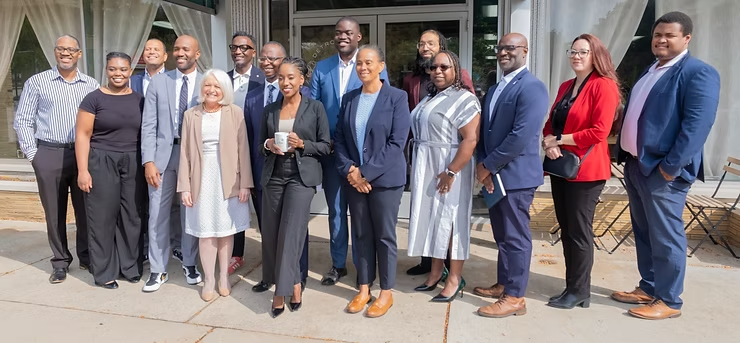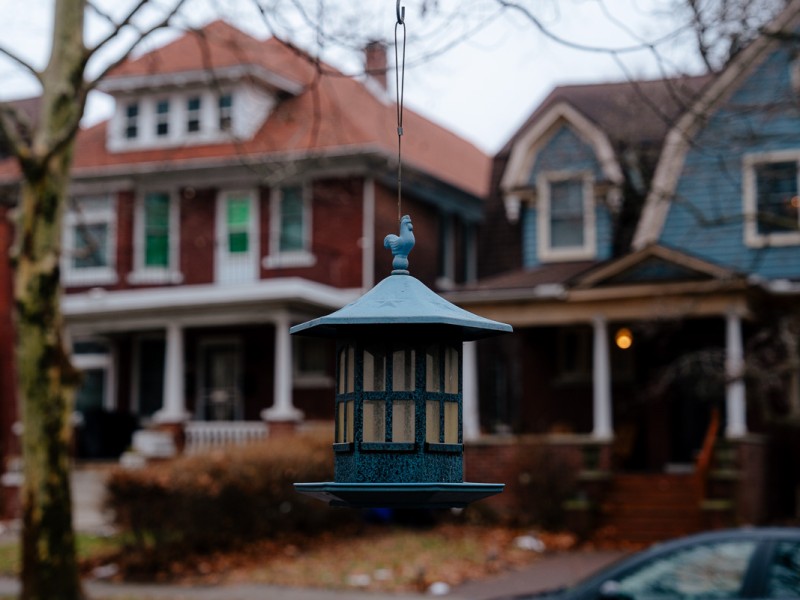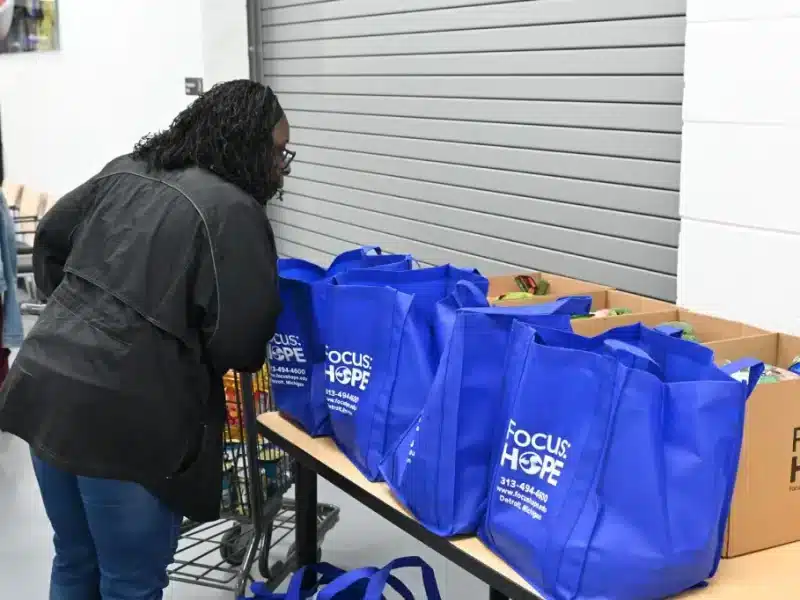A Night Out With … Brian Hurttienne
There’s a place on East Jefferson where Detroit’s truest players congregate. Corktown architect Brian Hurtienne, a member of The Players, offers a look inside the amateur theater group and gentlemen’s club.
Brian Hurtienne looks like he belongs in a tuxedo. Maybe that’s because his list of extracurricular activities reads like the resume of a senior class president trying to impress the board of college admissions: American Institute of Architects (AIA), co-chair of the Urban Priorities Committee, Corktown Business Association, Affirmations Lesbian and Gay Community Center, Michigan Opera Theatre, Human Rights Campaign dinners—giving him more than enough justification for the two tuxedos in his closet.
But after spending an evening in his home and as his guest at The Players club (for the annual black-tie invitational), it’s clear that this Detroit architect doesn’t do anything for effect. Whatever he’s working on receives 100 percent of his laser-like focus and fierce attention to detail.
When my husband and I arrive at his Corktown home (the floor above his architecture office), Hurtienne instantly slips into the role of consummate host. Pasta is simmering on the stovetop, and wasabi peas, almonds and plump blackberries sit in tiny bowls on the massive, ’20s dining room table, rumored to be from a mansion in Indian Village. Pet Shop Boys plays in the background. He skitters between the kitchen and the dining room, topping off drinks and taking coats. “There’s Pinot Noir and Shiraz, but I would recommend having the Shiraz first,” he says, in perfect agreement with his personality: very particular, in an impeccably polite kind of way.
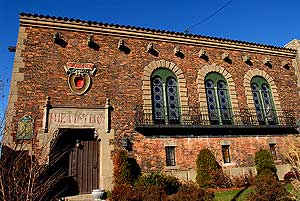 Hurtienne has been inviting guests to the Players’ historic playhouse on East Jefferson since he joined the amateur theater group 13 years ago. One of only two true private gentlemen’s clubs of its kind left in the country (the other in New York City), the Players club adopts the Shakespearian tradition, requiring all roles, including the female ones, to be played by men. Men make up the audience as well, save the two nights every year when women are allowed to attend as guests. “Back in the ’20s and ’30s, it was probably a mask for being effeminate. Now things are more open,” says Hurtienne.
Hurtienne has been inviting guests to the Players’ historic playhouse on East Jefferson since he joined the amateur theater group 13 years ago. One of only two true private gentlemen’s clubs of its kind left in the country (the other in New York City), the Players club adopts the Shakespearian tradition, requiring all roles, including the female ones, to be played by men. Men make up the audience as well, save the two nights every year when women are allowed to attend as guests. “Back in the ’20s and ’30s, it was probably a mask for being effeminate. Now things are more open,” says Hurtienne.
Before the “frolic” (the member lingo for their standard series of three one-act plays), all the member-players stand up, lift their steins and join in a raucous singing of the official song, “When the Day is Done.” Chairs squeak, corks pop, pretzels crunch — and the show begins. Any time a woman (played by a man, of course) walks onto the stage, the audience erupts into a giggly fit of hooting, clapping and whistling.
Tonight’s frolic, Picasso at the Lapin Agile, is a lighthearted two-act by Steve Martin. The year is 1904. On the brink of greatness, Picasso and Einstein meet in a Paris artist café shortly before the painting of Picasso’s “Les Demoiselles D’Avignon” and the publication of Einstein’s Relativity. It’s funny and clever, and the men pull off the female roles impressively, especially when they’re not trying to get a cheap laugh.
More impressive than the stage performances, however, is the interior of the auditorium: high, peaked ceilings with painted wooden roof beams; carved stone columns and arches; and wall murals painted by Paul Honore. During intermission, Hurtienne, acting the part of playhouse docent, takes us through the Florentine Renaissance-style building, affectionately called “The Beautiful Lady” by its members. The 90-plus years of documented history on the walls makes it seem like we’re exploring a museum. We climb the circular cement staircase up to the Founder’s Room, where photographs of the Board of Governors and beer steins, marked with the Players crest and each member’s name, line the walls. For every frolic, there’s a framed caricature of the frolic’s players as a group. Hurtienne points out one of his, and explains that there have only been five different artists drawing these amusing renderings throughout the years.
He’s been in two plays: Mr. Roberts and Office Hours. “In Mr. Roberts I played a sailor and one brief scene had a goat as part of the activities … a real goat,” he says. He has also been a past Board of Governors member, sat on a jumble of committees, designed sets and scenery, worked backstage taking down and putting up sets, and acted as assistant director for the play Harvey.
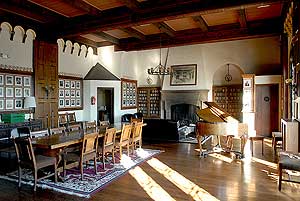 With the evening’s frolic though, he was a little disappointed. “It was kind of stupid,” he says. He hates when the frolics strive for seriousness, instead preferring the silliness that rules the Players’ stage most other nights. “In the play I was in, my mother’s skirt falls off—and the house just roars. That’s what it’s about. It’s about the camaraderie—to do something different. To be in a play takes you out of your normal realm. It lets you do and say and be and make. The best part of Players is when it’s a packed house, and everyone is talking. People forget their lines, but the plays continue on haphazardly anyway.”
With the evening’s frolic though, he was a little disappointed. “It was kind of stupid,” he says. He hates when the frolics strive for seriousness, instead preferring the silliness that rules the Players’ stage most other nights. “In the play I was in, my mother’s skirt falls off—and the house just roars. That’s what it’s about. It’s about the camaraderie—to do something different. To be in a play takes you out of your normal realm. It lets you do and say and be and make. The best part of Players is when it’s a packed house, and everyone is talking. People forget their lines, but the plays continue on haphazardly anyway.”
After curtain call, Hurtienne continues his tour, leading us through the lower-level bowels of the building. A hodgepodge of donated and member-created artwork (used for previous sets) clutters the narrow basement hallways. In the row of dressing rooms, rolling racks are crammed with costumes, wigs spill off shelves, and makeup brushes and tubes of foundation clutter the old Hollywood-style vanities. We all try on wigs, Hurtienne wearing one that makes him look like Carol from The Brady Bunch.
One of the member-players approaches Hurtienne, wondering if his male guests are interesting in joining the club. “We’re drinkers with an acting problem!” he announces as means of encouragement. And he might be right. Everyone seems to stick around long after the show is over—some at the bar, where three different beers are on tap (all-you-can-drink-style), while others congregate at their tables, finishing conversations and bottles of wine they brought from home.
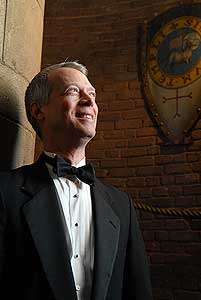 This post-show ritual gives us a chance to catch up on Hurtienne’s career and personal life—a dichotomy that is nearly impossible to define, considering the latter is continuously wrapped up in side projects related to architecture. Los Pistoleros is a design group he’s forming with a motley crew of local creative types, and he’s also the architect on the board for the construction of the new Affirmations building in downtown Ferndale. Professionally, he has carved out a nice little niche for himself through his firm, BVH Architecture, specializing in adaptive re-use projects, like the Kales Building (originally an office tower), the Carlton condominiums (originally a hotel) and the Grinnell Place Lofts (originally a piano warehouse). Currently, he’s working on plans for some brand-new projects, including Asian Village on the East Riverfront and a new condo development in Midtown.
This post-show ritual gives us a chance to catch up on Hurtienne’s career and personal life—a dichotomy that is nearly impossible to define, considering the latter is continuously wrapped up in side projects related to architecture. Los Pistoleros is a design group he’s forming with a motley crew of local creative types, and he’s also the architect on the board for the construction of the new Affirmations building in downtown Ferndale. Professionally, he has carved out a nice little niche for himself through his firm, BVH Architecture, specializing in adaptive re-use projects, like the Kales Building (originally an office tower), the Carlton condominiums (originally a hotel) and the Grinnell Place Lofts (originally a piano warehouse). Currently, he’s working on plans for some brand-new projects, including Asian Village on the East Riverfront and a new condo development in Midtown.
“I cannot explain how my career has gone,” Hurtienne says, “because it’s 500 times more than that. When you’re 12 years old, and you want to be an architect, who knows what that means. But as a professional architect, to create space that lasts years beyond anyone’s knowledge is a complete gift.”
“I feel good about what I’m doing here. I really think Detroit is a growth market — slow and steady. I’m doing new buildings, which is the best thing for my career. I’m getting the chance to infill and to approach modernism,” he says. “As an architect, that’s the dream.”
Photos:
Brian Hurtienne at the Players Club
The Players Club
The Players Club interior
Brian Hurtienne
All Photographs Copyright Dave Krieger
